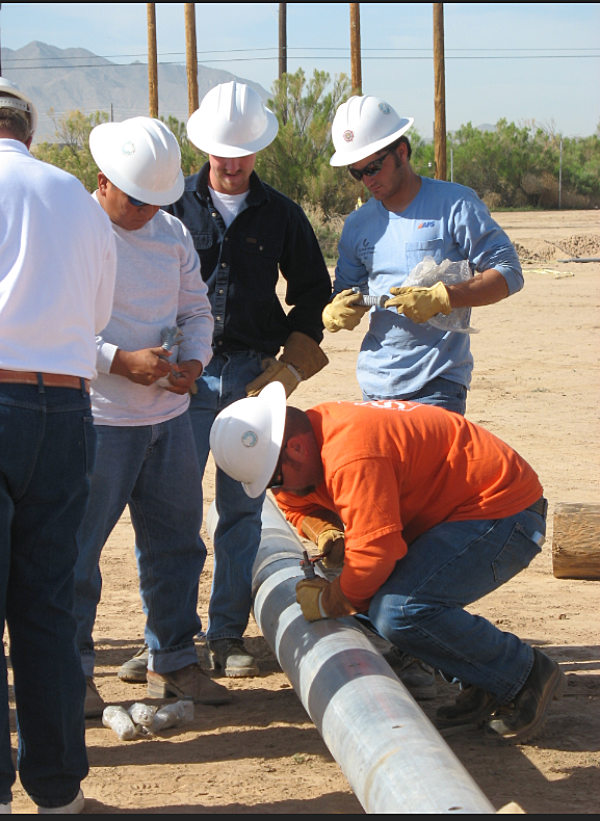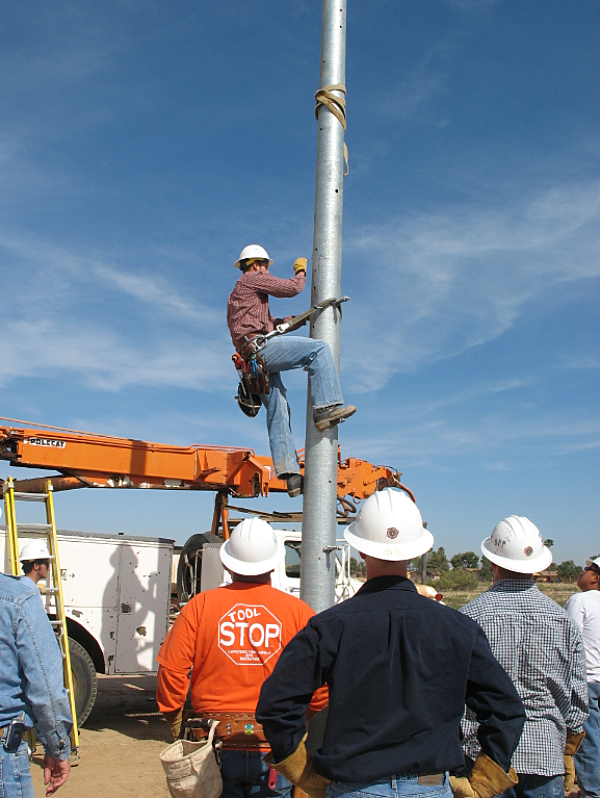Solutions for the Utility Industry: Online Training Resources and Environmental Regulations
With linemen schools closing and traditional training avenues not possible due to social distancing and quarantine measures taking effect from COVID-19, many are looking for remote or online resources for training. The Steel Utility Pole Coalition (SUPC) offers a free online training course, (https://steelutilitypole.talentlms.com/training)
Essential Lineman Training: Working with Steel Utility Poles, for students and journeymen/apprentice lineman.
As steel is becoming a standard material for utility poles, this course was developed to assist with the minimal learning curve associated with installing and maintaining steel utility poles. Today, more than 600 electric utilities are using steel distribution poles. Lineman training with steel is essential to helping students and linemen gain valuable skills and knowledge. This training was developed by partnering with respected industry leaders in utility safety and linework training, including the Institute for Safety in Powerline Construction (ISPC) and Metropolitan Community College (MCC).
There are two training modules, one for students/beginners and one for journeyman/apprentice linemen. These modules cover:

Students/Beginners:
- An Overview of working with Steel Poles
- Climbing Steel Utility Poles
- Drilling Steel Utility Poles
- Field Deployment of Steel Utility Poles
- Framing Steel Utility Poles
- Installing Steel Utility Piles
- Joining Steel Utility Poles
Journeyman/Apprentice
- An Overview of Steel Poles as Distribution System Structures
- Joining Multiple-Section Steel Poles
- Framing and Setting Steel Poles – De-energized
- Climbing Steel Poles
- Energized Line Work
- Additional Considerations
To begin the online training, simply complete the following steps:
- Create a free user account.
- Complete each segment within the training program (noted above). To complete each segment, the user must:
- Watch a video created specifically for the segment.
- Read a short document that provides further details on the information presented in the video.
- Complete a quiz to evaluate comprehension after the segment (prompts are provided to assist if incorrect answers are provided).
- After all segments are completed, the user will receive an email with a Certificate of Completion.
The SUPC can also provide a training module setup for your specific college or training center. This will allow the instructor to login to view which students completed the various segments and the scores they received on the quizzes at the end of each segment. Additionally, during normal times, the SUPC also provides complimentary in-person training, workshops, classroom sessions, and teaching materials for qualified schools, electric utilities, and associations. For more information, please contact Jeff Suda.

Impact of Environmental Regulations on Utility Poles
Pentachlorophenol (PCP), a chemical used in approximately 38% of poles in the United States, faces a near world wide ban at the end of 2020. In 2015 PCP was added to Annex A of the Stockholm Convention on Persistent Organic Pollutants (POPs). A listing in Annex A means the chemical has been identified to pose serious threats to human health and the environment, and parties to the Convention are required to discontinue its use in the next five years (the end of 2020 for PCP). All countries have ratified the Stockholm convention except the USA, Italy, Malaysia, Turkmenistan (in the process of ratifying), and South Sudan (In the process of ratifying).
With the date of discontinuation drawing closer, it is essential to consider how this may affect the supply of utility poles. The evaluation by the Stockholm Convention on pentachlorophenol (PCP) identified a number of chemical and non-chemical alternatives, including steel poles. Many of the chemical alternatives to treat wood poles have their own negative environmental impacts. As more and more countries discontinue use and production of PCP (including countries that traditionally imported PCP to the United States), it may be time to consider steel distribution poles as an alternative.
Hot-dip galvanizing is a zinc corrosion protection system applied to steel poles to provide maintenance-free longevity. The primary components of hot-dip galvanized steel poles, zinc and iron ore, are both abundantly found in the Earth’s crust. In fact, iron ore is the 4th most abundant element, and zinc is the 24th. In addition to being natural and readily available, both steel (the most recycled material in the world) and zinc are infinitely recyclable without the loss of any physical properties. Steel and zinc can be multi-cycled (used as steel and zinc again) rather than being down-cycled as most other products are. Therefore, hot-dip galvanized steel is an infinitely renewable building material.
In addition to utilizing natural, abundant, recyclable materials, galvanized steel poles do not emit harmful toxins into the environment while in use. As galvanized steel weathers, the zinc surface reacts with air during natural wet and dry cycles to form zinc oxide, zinc hydroxide, and zinc carbonate. These byproducts are already found naturally in water, soil, and the air. In fact, zinc is essential to all life, from humans to the smallest microorganisms. Unlike wood poles and many other building products, hot-dip galvanizing energy inputs and emission outputs (environmental impacts) are isolated to the production phase. This is because there is little to no maintenance is required during use in normal conditions during its 75+ year average lifespan. Therefore, any environmental impact from producing hot-dip galvanized steel poles is averaged over the decades of maintenance-free life. At the end of the pole’s usable life 100% of it can be recycled. All of these factors make steel poles a more environmentally friendly product when compared to treated wood.

